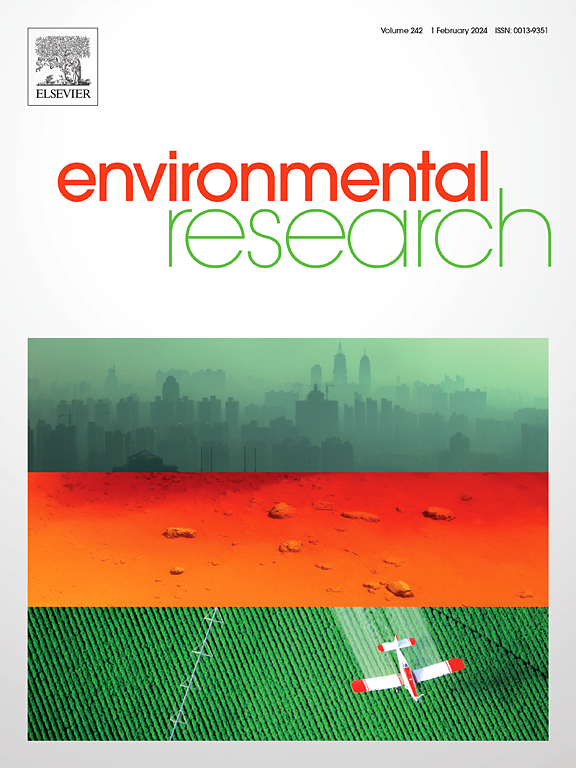池塘生态系统中两栖类和龟类环境DNA的时空分布
IF 7.7
2区 环境科学与生态学
Q1 ENVIRONMENTAL SCIENCES
引用次数: 0
摘要
环境DNA (eDNA)分析已成为生物多样性监测和保护的一种变革性工具。然而,水生环境中eDNA生态过程的不确定性降低了基于eDNA的调查的可靠性。了解eDNA的分布和持续模式对于有效地将eDNA数据与跨时空尺度的物种发生联系起来至关重要。本研究通过建立美国牛蛙(Lithobates catesbeianus)和红耳滑鼠(Trachemys scripta elegans)的受控eDNA来源,并利用液滴数字PCR技术对不同水层和沉积物样品的eDNA浓度进行定量分析,研究了池塘生态系统中两栖动物和海龟物种eDNA的时空分布。结果表明,两种物种的eDNA都高度集中在生物源的2-5 m范围内,其扩散距离与生物在池中存在的时间无关,并随时间呈垂直增加趋势。eDNA的浓度和持久性因物种和底物类型而有显著差异,牛蛙的eDNA可检测性明显较高。沉积物中eDNA的平均浓度是水中eDNA的1.4 × 104倍,eDNA持续时间约长一周。我们的研究结果表明,eDNA的强聚集模式可以为池塘系统中两栖动物和海龟的空间分布提供有价值的见解。地表水eDNA对生物多样性监测和水生入侵物种管理具有较好的时效性。在未来的eDNA采样设计中,应仔细考虑目标分类群的特异性和沉积eDNA的时间互补性。本文章由计算机程序翻译,如有差异,请以英文原文为准。
Spatio-temporal distribution of environmental DNA from amphibian and turtle species in a pond ecosystem
Environmental DNA (eDNA) analysis has emerged as a transformative tool for biodiversity monitoring and conservation. However, uncertainties in the ecological processes of eDNA in aquatic environments decrease the reliability of eDNA-based surveys. Understanding the distribution and persistence patterns of eDNA is essential to effectively correlate eDNA data with species occurrence across spatial and temporal scales. Here, we investigated the spatio-temporal distribution of eDNA from amphibian and turtle species in a pond ecosystem, by establishing controlled eDNA sources from American bullfrogs (Lithobates catesbeianus) and red-eared sliders (Trachemys scripta elegans), and quantifying eDNA concentrations from different water layers and sediment samples using droplet digital PCR. Our results showed that eDNA from both species was highly concentrated within 2–5 m of the biological sources, with dispersal distance independent of the duration of organism' presence in the pond and exhibiting a vertically increasing trend over time. eDNA concentration and persistence varied significantly depending on species and substrate type, with bullfrogs showing notably higher eDNA detectability. The average eDNA concentration in sediment was 1.4 × 104 times higher than in water, and eDNA persisted approximately one week longer. Our findings demonstrate that the strong aggregation patterns of eDNA can provide valuable insights into the spatial distribution of amphibians and turtles in pond systems. eDNA from surface water showed greater timeliness for biodiversity monitoring and aquatic invasive species management. The specificity of target taxa and the temporal complementarity of sedimentary eDNA should be carefully considered in future eDNA sampling designs.
求助全文
通过发布文献求助,成功后即可免费获取论文全文。
去求助
来源期刊

Environmental Research
环境科学-公共卫生、环境卫生与职业卫生
CiteScore
12.60
自引率
8.40%
发文量
2480
审稿时长
4.7 months
期刊介绍:
The Environmental Research journal presents a broad range of interdisciplinary research, focused on addressing worldwide environmental concerns and featuring innovative findings. Our publication strives to explore relevant anthropogenic issues across various environmental sectors, showcasing practical applications in real-life settings.
 求助内容:
求助内容: 应助结果提醒方式:
应助结果提醒方式:


